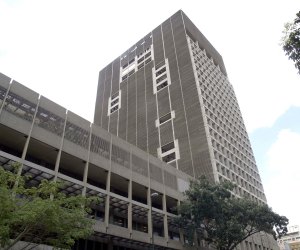Inflation-gate


 After a never-before-seen, jaw-dropping, soul-crushing three-month delay, the Venezuelan Central Bank (BCV for its acronym in Spanish) published inflation rates for June, July, and August. But with the jumbled way in which they rolled out these figures, they might as well have saved themselves the trouble.
After a never-before-seen, jaw-dropping, soul-crushing three-month delay, the Venezuelan Central Bank (BCV for its acronym in Spanish) published inflation rates for June, July, and August. But with the jumbled way in which they rolled out these figures, they might as well have saved themselves the trouble.
So far, and according to these numbers, prices have risen by 39% in 2014 alone. In the first eight months of the year, the inflation rate has already exceeded the target set by the government in the Budget for the whole year, which was in the range of 26%-28%. It’s the highest inflation for a January-August period since 1996 (when, following the dismantling of price and exchange controls, inflation reached 103%).
Over the last 12 months, official inflation reached 60%. That’s higher than any country in the world will have in their entire year… several years for some. For some extra details, read this note (in Spanish) in Prodavinci.com
But that’s not even the most alarming part of the press release. After inconsistencies in their figures, the BCV “adjusted” the press release… downward!
In the first version of the press release, the BCV presented a 12-month inflation rate of 62.2% for June 2014, implying a monthly inflation of 5.5% for that month instead of the 4.4% they were reporting reflected in the same press release and on the statistics published the website of BCV.
This created strong doubts about the credibility of the numbers, because in July 2014, Henrique Capriles and others reported that inflation in June 2014 was … 5.5%!
The press release was subsequently adjusted, and it now reflects an annual inflation rate of 60.5% for June 2014, which matches to the monthly rate of 4.4% reported for June 2014. Kudos to our friend and frequent commenter @econ_vzla for being the first to notice.
For more details about this “adjustment”, read this other note (in Spanish) in Prodavinci.com.
Ultimately, the BCV has shot itself in the foot multiple times. After concealing the numbers for months and months, they are trying to convince the public that inflation is actually decelerating, and they are doing so by badly fudging their own figures.
One of the other indicators that is not being presented is the “scarcity index,” which roughly measures the percentage of goods that are missing from the shelves. It makes sense for them to hide the numbers, given how the unofficial figures suggest scarcity reached a record-setting 35%.
And you know what’s really scarce? Credible economic figures.
Caracas Chronicles is 100% reader-supported.
We’ve been able to hang on for 22 years in one of the craziest media landscapes in the world. We’ve seen different media outlets in Venezuela (and abroad) closing shop, something we’re looking to avoid at all costs. Your collaboration goes a long way in helping us weather the storm.
Donate




